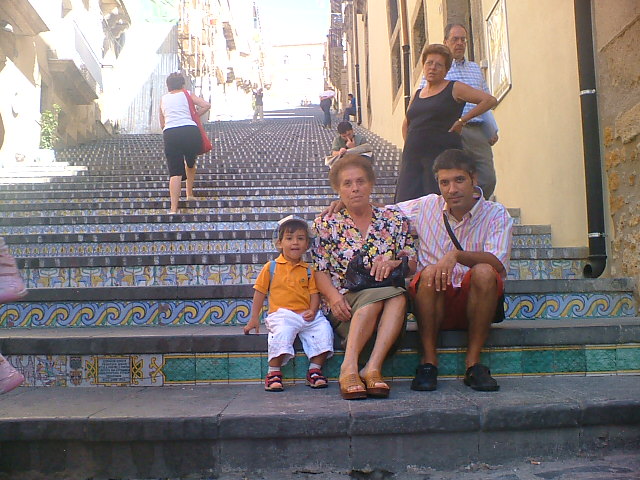Home - In and around
VAL DI NOTO EASTERN SICILY
The Val di Noto is the territory of eastern Sicily that geographically corresponds to the southern tip of the island, identified between the province of Ragusa, Syracuse and part of the provinces of Catania and Caltanissetta.
Among all the towns of the Val di Noto, the municipalities of Caltagirone, Militello in Val di Catania, Catania, Modica, Noto, Palazzolo Acreide, Ragusa and Scicli in 2002 entered the UNESCO World Heritage List thanks to the Sicilian baroque.
In addition, the historical centers of the municipalities of Acireale in the province of Catania, Ispica in the province of Ragusa and Mazzarino in the province of Caltanissetta are being added.
Note that "Val" in this case is not for "Valle" but for Vallo, the name of the geographical units in which Sicily was divided into the Arab-Norman period: together with Val di Noto there were the Val di Mazara and the Val Demone.
The particularity of this common "identity" for the cities, derives above all from the admirable reconstruction that took place after the earthquake of the Val di Noto in 1693. There are in fact some wonderful examples of late Baroque art and architecture of which they constitute a moment of synthesis, presenting notable characteristics of urban and architectural homogeneity.
Given these characteristics, the circuit of the cities of the Val di Noto has been registered in the Unesco register. This important result is determining a positive economic fallout in the entire area, in the face of an increase in tourist presences in the area and the birth of multiple accommodation facilities.
However, to threaten the integrity of the landscape there is the attempt, by a Texan oil company, to start a series of projects for the extraction of oil from the subsoil. This request that does not fit with its tourist aspirations was initially supported by the Sicilian Region and subsequently blocked by the then Regional Councilor Fabio Granata in 2003. To date the company, still determined to carry on its project, has initially resorted to the TAR of Sicily, subsequently announced the "stop" to drilling; however, this decision is still contested by environmentalists because the detention concerns a part of the territory concerned.
Among all the towns of the Val di Noto, the municipalities of Caltagirone, Militello in Val di Catania, Catania, Modica, Noto, Palazzolo Acreide, Ragusa and Scicli in 2002 entered the UNESCO World Heritage List thanks to the Sicilian baroque.
In addition, the historical centers of the municipalities of Acireale in the province of Catania, Ispica in the province of Ragusa and Mazzarino in the province of Caltanissetta are being added.
Note that "Val" in this case is not for "Valle" but for Vallo, the name of the geographical units in which Sicily was divided into the Arab-Norman period: together with Val di Noto there were the Val di Mazara and the Val Demone.
The particularity of this common "identity" for the cities, derives above all from the admirable reconstruction that took place after the earthquake of the Val di Noto in 1693. There are in fact some wonderful examples of late Baroque art and architecture of which they constitute a moment of synthesis, presenting notable characteristics of urban and architectural homogeneity.
Given these characteristics, the circuit of the cities of the Val di Noto has been registered in the Unesco register. This important result is determining a positive economic fallout in the entire area, in the face of an increase in tourist presences in the area and the birth of multiple accommodation facilities.
However, to threaten the integrity of the landscape there is the attempt, by a Texan oil company, to start a series of projects for the extraction of oil from the subsoil. This request that does not fit with its tourist aspirations was initially supported by the Sicilian Region and subsequently blocked by the then Regional Councilor Fabio Granata in 2003. To date the company, still determined to carry on its project, has initially resorted to the TAR of Sicily, subsequently announced the "stop" to drilling; however, this decision is still contested by environmentalists because the detention concerns a part of the territory concerned.



